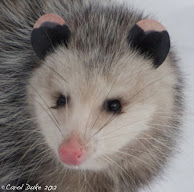When I wrote about the Red Admiral, Vanessa atalanta, in my first Flower Hill Farm Butterflies of 2011, I was bemoaning the fact that I had never seen this 'admirable' butterfly in my gardens. Well, from year to year, we never know how things might be.
This past spring of 2012 I delighted in oodles of the brightly, patterned butterflies floating about like living ornaments, lit up by the sun, lighting and feeding all over the weeping crabapple just outside our little painting studio. Red Admirals were nectaring on the lilacs too. Proof that these members of the Brushfooted family do enjoy a sweet sip of flower nectar along with tree sap, when they are not focused on the more fermented yucky taste of rotten fruit or excrement, including that of birds . . . who eat butterflies . . . hmmm.
Like their cousins, Painted Ladies, the Red Admirals live worldwide.
In Massachusetts one might see admirals 'on the wing' from May through early September. They will choose a habitat near a wettish wooded area and must enjoy the several seasonal springs in our forest.
Stinging nettles, false nettle and wood nettle along with hops will suffice for the caterpillars, who secure themselves within various leaves and munch through instars . . . finally folding a leaf over themselves to become a chrysalis. These butterflies will fly south for the winter months. Massachusetts sightings noting hundreds of Red Admirals moving west have been recorded along with other United States and European enthusiast reporting seeing "enormous numbers" . . . records go back for over a hundred years.
The migrating admirals admire the May gardens and do their best to flee when a bird's beak slashes their lovely kaftans. May is a time for parenting birds to forage for nestlings and they become discerning hunters making Flower Hill Farm a dangerous place for butterflies in any stage of growth.
The Red Admiral above appears to be enjoying a deep sip for his antennae is dipping down. Yummy.
Near full golden moon rising above the ridge of Walnut Hill.
It seems like this March full moon should be a Full Snow Moon continued but in fact it is the Worm Moon according to some Native Americans. Beneath the snowy fields the ground may be thawing and the earthworms are stirring which is great news to the woodcocks. Some call this March full moon Full Sap Moon and it is certain that our neighbors are burning sap in their sugar shacks, so that tells us that tree sap is running. Whatever one calls this moon it can always be call beautiful as it spins around our planet. Birds are singing at sunrise . . . they must know that spring is nearly here, though when I look out the window it seems faraway.
I cope by continuing to play with bright cheery colors from last years wildlife.
More butterflies were sighted in the gardens in 2012 and I look forward to sharing them with you in upcoming installments of Flower Hill Farm Butterflies of 2012.
































































































































































